Saturday Shoutout / 4 Is Enough
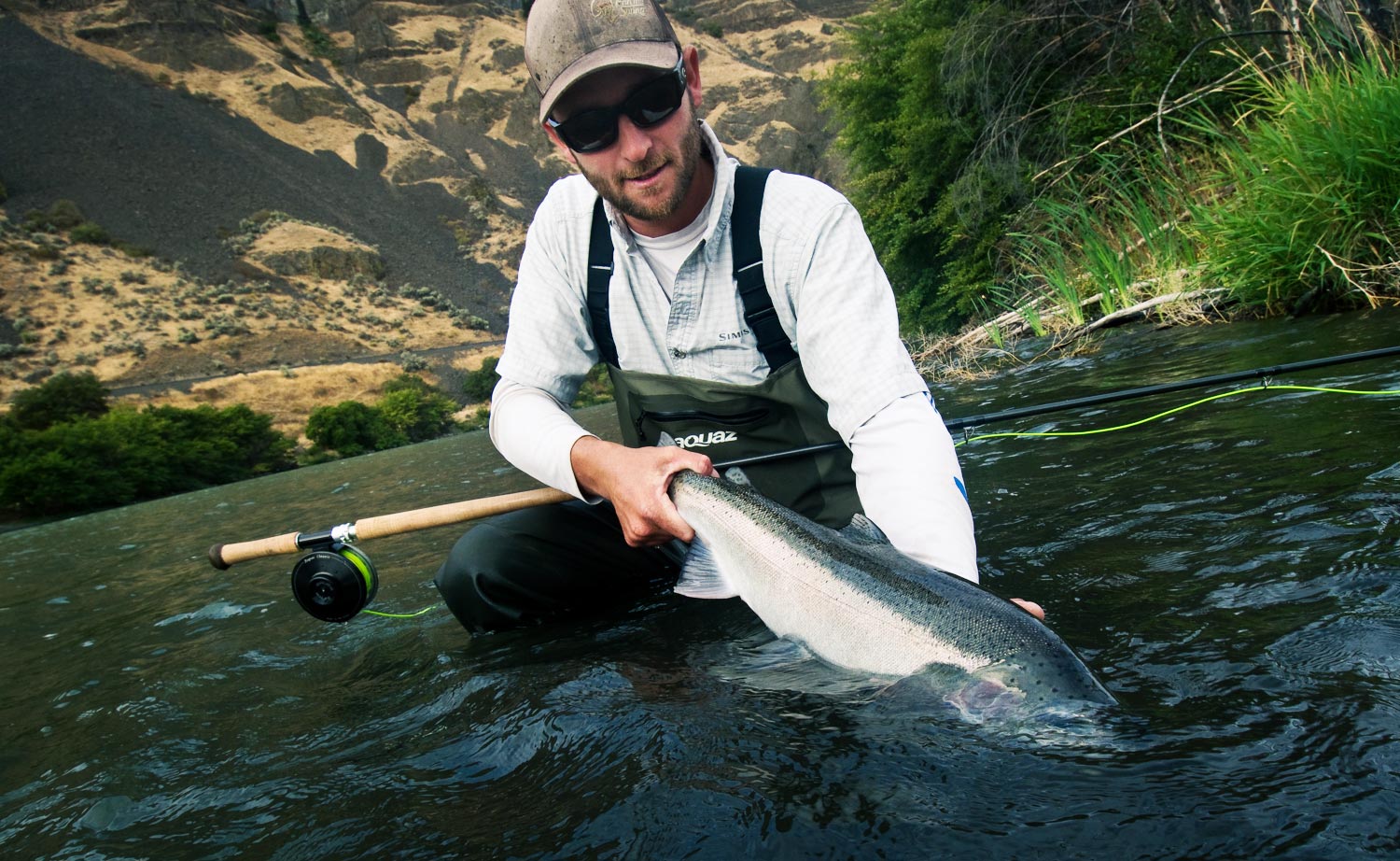
Brian O’Keefe has something on his mind and it isn’t how many steelhead he can catch.
This article from Wild Steelheaders United might just be the birth of a movement. At a meeting of folks interested in steelhead conservation, Brian stood up and declared, “Four is enough!” What the hell is he talking about? I thought. Once I found out I though it was pretty cool.
CHECK OUT THIS ARTICLE AND SEE IF 4 IS ENOUGH FOR YOU.
Four Is Enough
Read More »Graphite VS Fiberglass With Tim Rajeff: Video
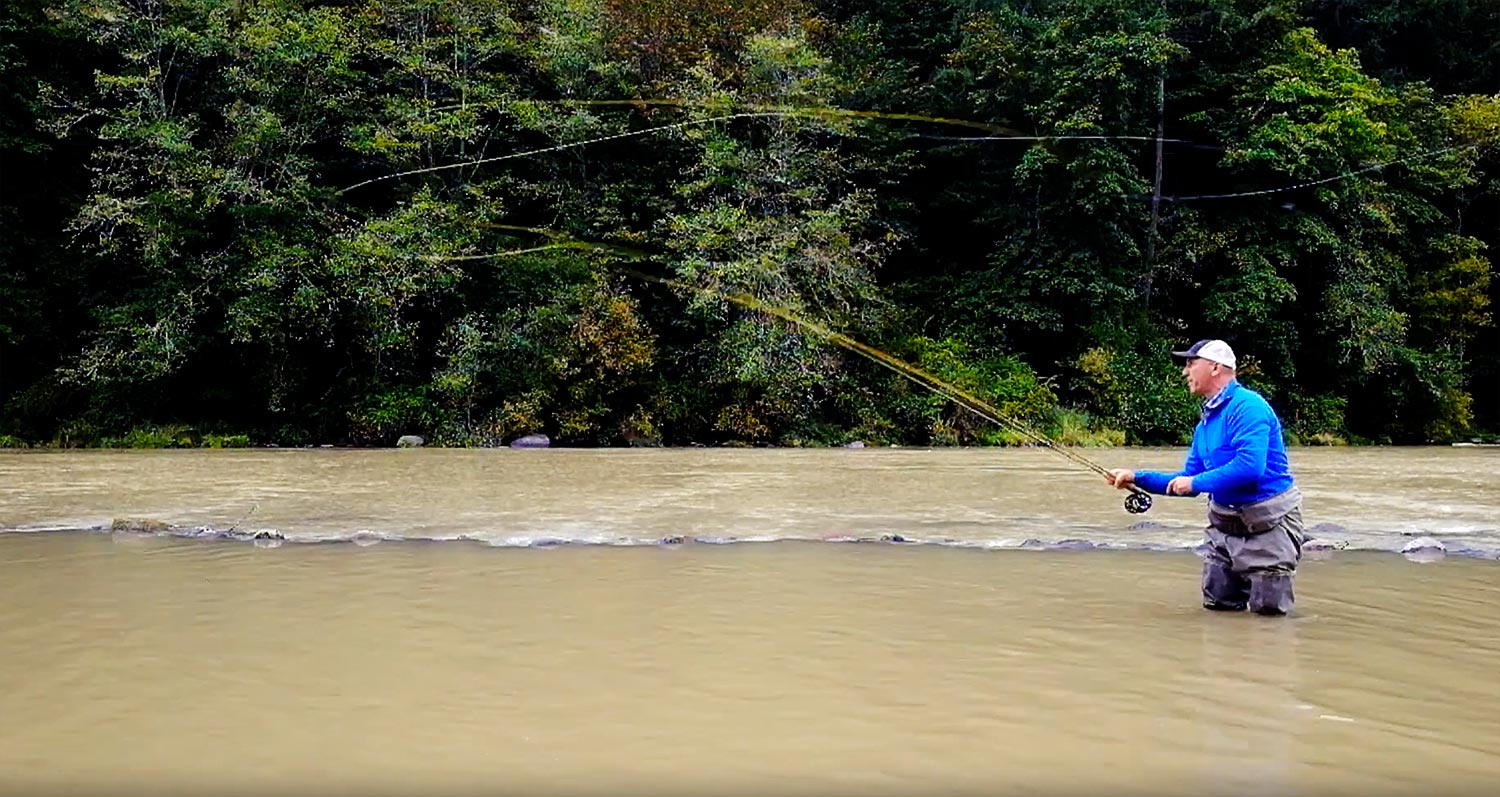
What’s the difference between graphite and fiberglass fly rods?
Most fly rods, these days, are made of carbon fiber but a generation ago fiberglass was king. Today glass rods are making a strong resurgence, and with good reason. There are some benefits to fishing a fiberglass fly rod but how do you know if it’s the right tool for you?
In this video Tim Rajeff explains the different actions and the pluses and minuses to each. He tells you why he fishes mostly fiberglass rods and demonstrates a crazy feat of casting skill by casting a graphite rod and fiberglass rod together in one hand.
WATCH THIS VIDEO TO LEARN ABOUT GRAPHITE VS FIBERGLASS FLY RODS FROM TIM RAJEFF OF ECHO.
Read More »Echo Bad Ass Glass: Review
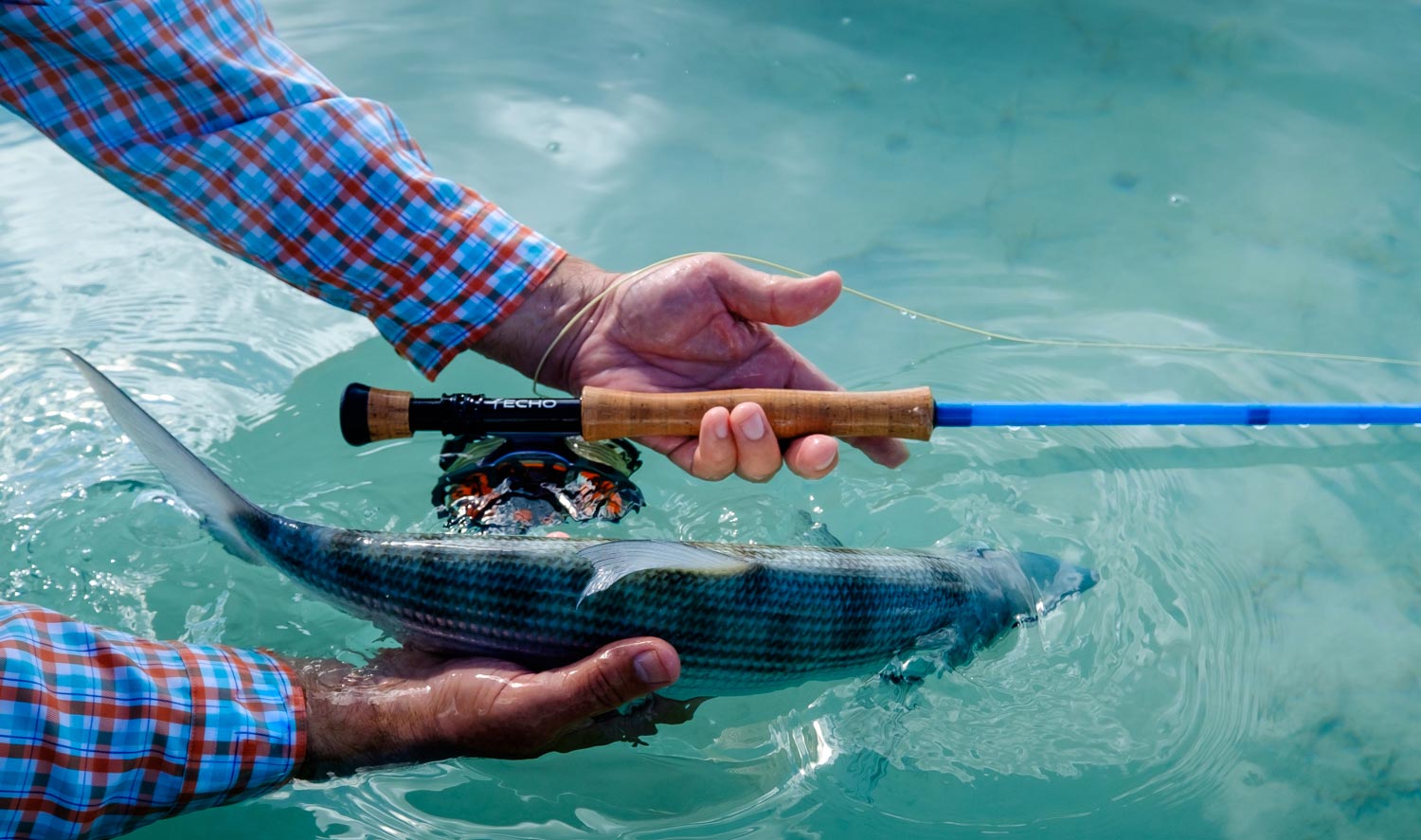
I saw this fly rod and I knew I had to have it.
I have a problem. I openly admit that. I am a fly rod junkie and I’m in way too deep to stop now. Once you reach the point in the addiction when you start fishing glass in saltwater, there is no going back.
Two thing about this fly rod stole my heart as soon as I saw it. It’s fiberglass and it’s bright blue. That is messed up on every level, I admit it. What is it that draws me, and many other anglers, to fiberglass fly rods? My good friend Michael White says that’s the proof that fly fishing is not a sport. He sites that in no other sport do athletes embrace old technology, which could arguably reduce their performance. I think that’s a brilliant insight, and I, and many other anglers, make that choice more and more. We choose what is arguably a less efficient tool. A fiberglass fly rod. Why?
I can only answer for myself. I like glass because, for what ever reason, it enhances my experience. It’s simply more fun.
I’m fortunate to call Tim Rajeff my friend. Tim is a brilliant individual outside of fly fishing, and when it comes to fly fishing he is almost unmatched. When I told Tim I wanted to take his new Bad Ass Glass rod to the the Bahamas for bonefish, I got a look. I knew that I was putting this fly rod to the ultimate test. While I’ve heard anglers raving about this rod for tossing bass poppers and streamers, taking a fiberglass rod out on the flats is defiantly the next level and I couldn’t resist.
I caught my first saltwater fish on fly with a glass rod. It was a long time ago but I still remember it. I guess I thought it might bring back those memories for me, but when I got the BAG out on the flats, I found it was a completely different animal.
It was a windy week on South Andros and I put off fishing the glass for a couple of days. Eventually I figured there was no time like the present. I expected to get pummeled but I quickly discovered this rod had more backbone than I gave it credit for. I could actually
Read More »Fly Fishing, No Pain No Gain
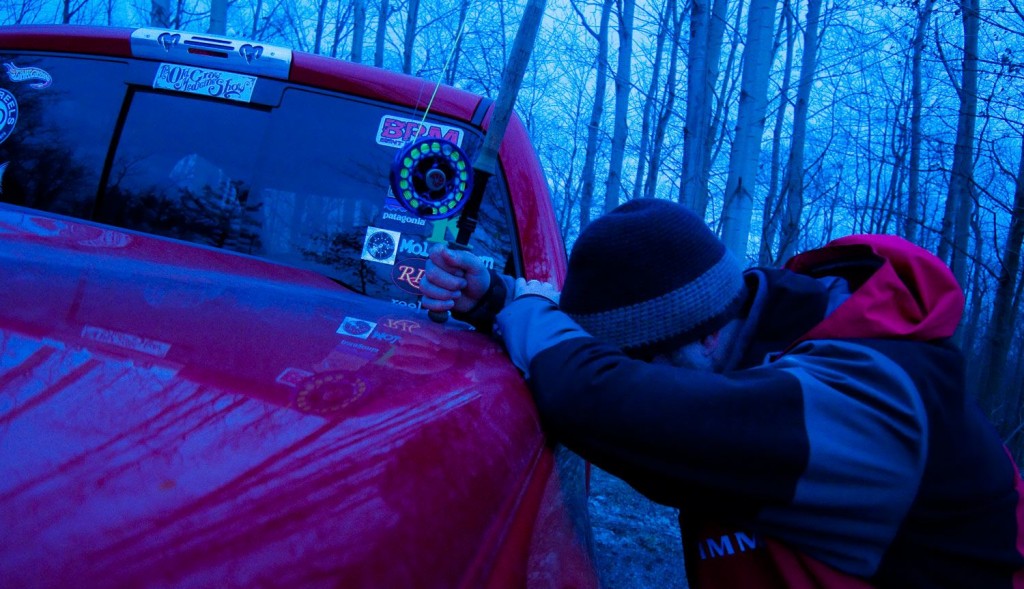
Have you ever felt like this when you got back to the truck after a long day of fishing?
Giving it my all on the water is a trait I strongly believe in for my fishing and guiding. I always try to make a point to explain to all my clients, that as long as they give it their all on the water, that’s all that really matters. There’s no reason for them to be disappointed about having a slow day on the water or get upset when a big fish fails to eat, so long as they took the time to approach their holes with stealth, made their best presentations, and fine-tuned their rig and pattern choice. After all, that’s why it’s called fishing not catching, right? We can only do so much as anglers, and even when we bring our best, there still will be times when we won’t be able to persuade certain fish to take our flies.
Keep this in mind next time you go out to wet a line. Don’t lose sight of the big picture, which is to always enjoy your time on the water. And don’t fish lazy, try to
Read More »The Atlanta Fly Fishing Show

By Justin Pickett
THE ATLANTA EDITION OF THE FLY FISHING SHOW MADE ITS DEBUT AT THE INFINITE ENERGY CENTER ON FEBRUARY 3RD AND 4TH, AND WE WERE THERE TO WATCH IT GO DOWN.
I’m a little behind, but there’s never really a bad time to talk fly fishing. With crazy schedules forcing us to divide and conquer, Louis attended on the 3rd, and I the 4th. With other bigger, successful, annual shows preceding Atlanta, this event would surely be compared to the others that came before it. In the weeks prior, the Fly Fishing Show had already stopped in Denver, as well as Somerset, which boast big names and big crowds. Louis and I both wondered if Atlanta would be able to stack up to the other show stops, and, in the end, I think we were both happy with the results.
Walking onto the showroom floor, I was pleased to be greeted with the immediate, loud chatter that I often associate with large, indoor shows such as this. The large crowd was scattered amongst the aisles, and there was a group of anglers at every booth, jib-jabbing about fly fishing. I made my way around the perimeter booths first, running into a few old friends, as well as some new friends. Stopping to speak with Oliver White for a bit, I was able to see Lefty doing a demonstration on the casting pond with folks, like Flip Pallot, watching eagerly. No one can resist watching Lefty do a casting demonstration. Making my way around the block, I was pleased to see a great presence by the local fly shops, outfitters, and guides. Many were there to promote their fisheries, some of the Southeast’s most diverse. Other local Georgians were repping for some of the bigger names, such as tarpon maniac Joel Dickey (Thomas & Thomas). Dotted amongst the local establishments, were the lodges from both near and far promoting their fisheries as well.
Along the left wall of the show was one of my favorite stops
Read More »Sunday Classic / Fight The Good Fight, in Saltwater or Fresh

MY FRIEND KIRK DEETER SAYS FRESHWATER AND SALTWATER FLY FISHING ARE, “TWO ENTIRELY DIFFERENT SPORTS PLAYED WITH THE SAME EQUIPMENT.”
In essence that is true and Kirk’s point is doubly true. Anyone who’s tried both can attest to that, but some of that equipment looks more similar than it is.
Reels, lines, leaders, hooks, tying materials are all different but there is likely no piece of equipment more different than the rod. There are a lot of differences between freshwater and saltwater rods and in several ways their use is quite different. This became readily apparent while giving a good friend, who guides for trout, a quick lesson before is first bonefish trip. He’s a great fisherman and caster but I could see from the look on his face that the eight weight I was lending him was strikingly unfamiliar.
We’ve talked a good bit about saltwater casting, the double haul and line speed but for those who are making the switch from trout to saltwater fly fishing, I’d like to offer some pointers on the techniques that I feel are the least intuitive. The fighting of fish.
When it comes to the fight, the trout rod and the saltwater rod are truly two different tools and they require different techniques. The divergence of those techniques starts with a fundamental element, the fish. It is the difference in the fish that dictates both the design of the rod and the tactics employed in its use.
Read More »Saturday Shoutout / Claypool and Ween

Here’s a fishing show that might get me back in front of the television. Apparently Mickey Melchiondo (AKA Deen Ween) and Les Claypool (of Primus) are teaming up with Matt Stone and Trey Parker (the creators of South Park) to produce a fishing show. The pair will host celebrity guests and promises to be hysterical. Both Ween and Claypool fly fish. Who knows how much of that we’ll see but expect the show to be worth checking out. I expect it’s the closest I’ll get to actually fishing with these guys. You can get more info HERE. Louis Cahill Gink & Gasoline www.ginkandgasoline.com hookups@ginkandgasoline.com Sign Up For Our Weekly Newsletter!
Read More »Soft Presentation With Tim Rajeff
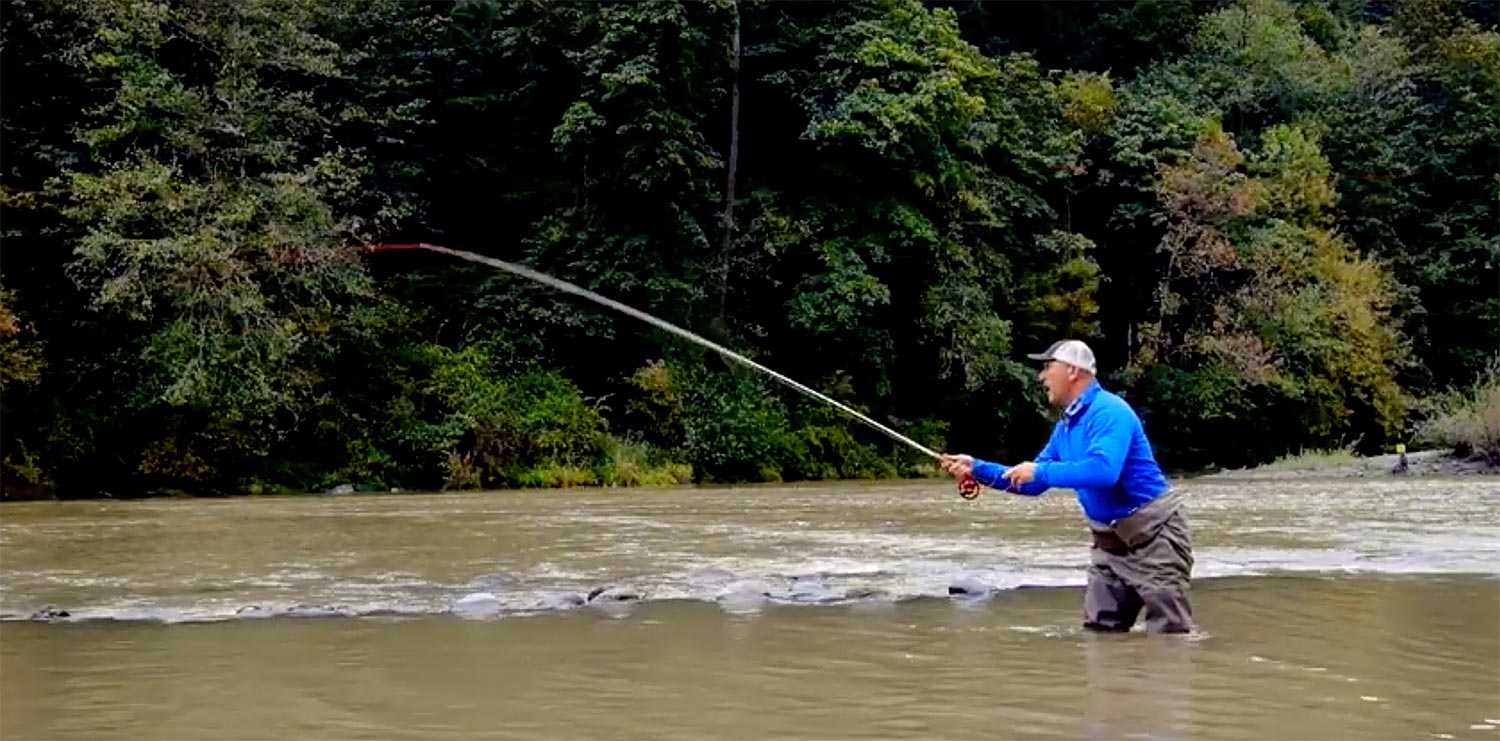
Tim Rajeff shows you two effective styles of soft presentation casts.
Whether you’re offering a #20 spinner to a sipping trout or tossing a toad to a lunker tarpon, a soft presentation is key to success. Too many anglers struggle with making an accurate cast that lands softly.
No one knows fly casting like Tim Rajeff, so I asked him to take a minute to show us how he presents the fly when the pressure is on. He shared two types of casts he uses, depending on the conditions. Master these two casts and you’ll catch a lot more fish when things get technical.
WATCH THE VIDEO TO LEARN TIM RAJEFF’S SOFT PRESENTATION CASTS.
Read More »Standing in the River Carrying a Torch
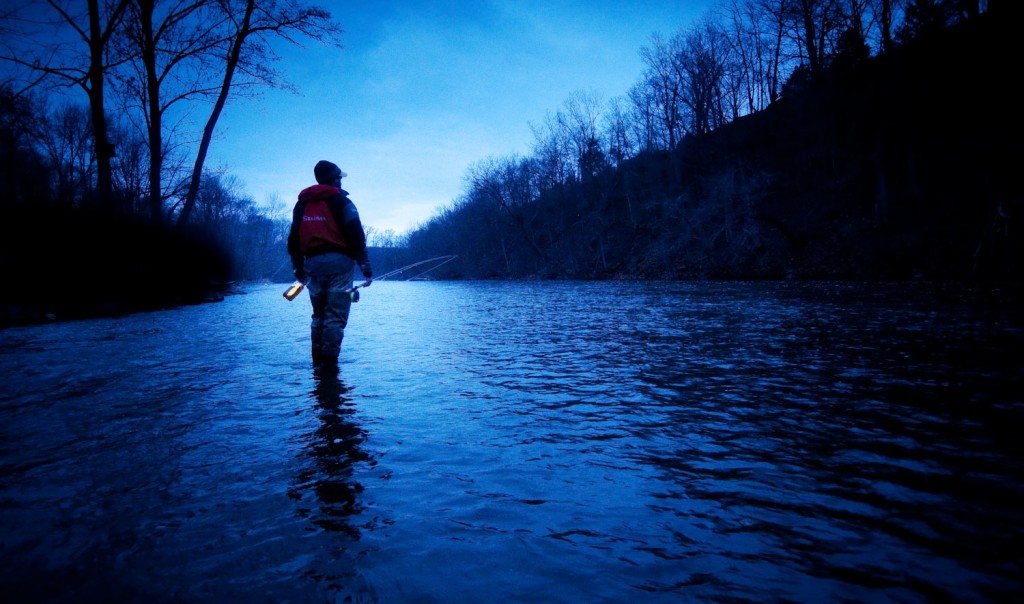
Standing in the River Carrying a Torch
A different kind of love story.
Men and fish parted ways a long time ago. You couldn’t call it an amiable divorce. The fish got everything. The mountain streams, the lazy winding rivers, the deep blue sea, everything. Men had to pack their bags and crawl, with their heads hanging, out onto the land and they were not happy about it. They learned to breathe air and walk on two legs but they never stopped dreaming of swimming in the dark oceans, nor of the long and lovely fish that had sent them packing. They thought about fish all the time. They made their homes near the water and lurked around the shore, peering into the depths. Men wondered if the fish ever thought about them. Probably not. They saw fish from time to time, sliding gracefully through a pool or leaping a waterfall. They seemed happy. They seemed to have moved on, forgotten about men altogether. Men knew they should be happy for the fish, but they weren’t. They were bitter and moody and often cried at night. Men invented alcohol and that helped. It didn’t take their mind off of fish but liquor is a good listener and it doesn’t judge or mind if you cry.
“Who needs fish, Fuck ’em”, men decided. They turned their back on the water and went to the woods and found animals and for a while it took their mind off of things. They stalked and chased and laid in wait and for a while the pretty little deer were fun, but in time those big black eyes just seemed empty. Men had nothing to talk to deer about. Try to explain to deer about the ocean, about gliding through the waves, your body taut and glistening, one with the current. Deer don’t understand what it feels like to rocket up from the depths and break the surface, breaching in defiance of all things that would have you, only to disappear back into the depths. Deer don’t know anything. Eventually these encounters became bitter and joyless. There was no more stalking and chasing, no more lying in wait, just that vapid look in the headlights and the thud, thud under the wheels. Again, men found themselves staring at the water.
Men decided that if they couldn’t swim, they would fly! “Let’s see fish do that” they thought. They made airplanes and took to the sky. They soared and swooped. They glided through the clouds but when they looked down, there was always water. They built better planes. Planes that would take them higher and farther, high enough that they didn’t have to see the water anymore. Men flew to the moon. They played golf there and drove dune buggies and it was fun, but when they got back someone noticed that all the photos they had taken were of the Earth. There it was in every photo. That beautiful blue ball with those deep seductive oceans. Men went back to the moon a few times but got bored with it and stopped going. Golf just wasn’t man’s game.
Read More »Sunday Classic / Fly Fishing Stillwater by Gareth Jones
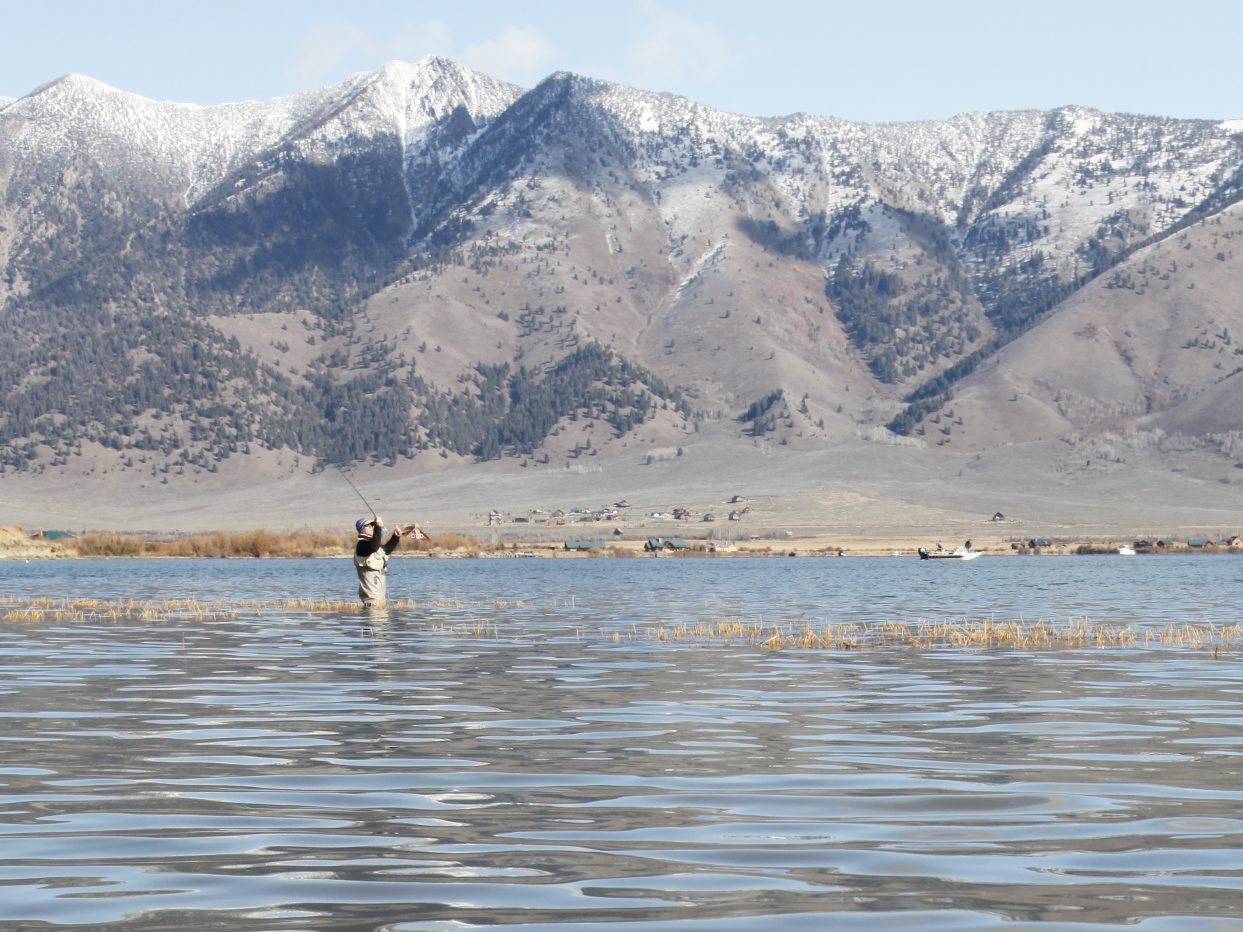
THE OTHER HENRY’S
Mention to any flyfisher that you’re heading for Island Park, Idaho and they’ll immediately think you’ll be packing a selection of CDC and biot creations intended to deceive the wonderfully selective leviathans of the Henry’s Fork.
However, my latest visit to see Rene Harrop and the boys at the TroutHunter, was all about fly fishing the incredible Stillwater’s of the region, and more specifically, Henry’s Lake. The plan was to see how fishing UK flies and techniques would work on the great Cutthroat and Hybrids that inhabit the lake. This wasn’t the first time I fished the lake. I’d visited it ten years earlier, and I remembered enjoying some wonderful sport-fishing from a float tube, fishing damsels through the gaps in the summer weeds. Needless to say, I was fairly confident that some of my own fly patterns and techniques would produce on this trip, and I was excited to hit the water.
Read More »